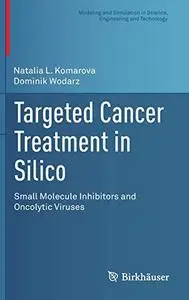Targeted Cancer Treatment in Silico: Small Molecule Inhibitors and Oncolytic Viruses by Natalia L. Komarova
English | PDF | 2014 | 235 Pages | ISBN : 146148300X | 5.5 MB
This monograph provides the first in-depth study of how mathematical and computational approaches can be used to advance our understanding of cancer therapies and to improve treatment design and outcome. Over the past century, the search for a cancer cure has been a primary occupation of medical researchers.
So far, it has led to a wide range of treatment techniques, including surgery, chemo- and radiotherapy, antiangiogenic drugs, and most recently, small molecule inhibitors and oncolytic viruses. Each treatment tends to have a certain effectiveness in a specific class of patients, but it is often unclear what exactly causes it to succeed or fail. Recent technological advances have given rise to an ever increasing pool of data and information that highlight the complexity underlying the cancers and their response to treatment. Next to experimental and clinical research, mathematical and computational approaches are becoming an indispensible tool to understand this complexity.
Targeted Cancer Treatment in Silico is organized into two parts, corresponding to two types of targeted cancer treatment: small molecule inhibitors and oncolytic viruses. In each part, the authors provide a brief overview of the treatment’s biological basis and present the mathematical methods most suitable for modeling it. Additionally, they discuss how these methods can be applied to answer relevant questions about treatment mechanisms and propose modifications to treatment approaches that may potentially increase success rates.
The book is intended for both the applied mathematics and experimental oncology communities, as mathematical models are becoming an increasingly important supplement to laboratory biology in the fight against cancer. Written at a level that generally requires little technical background, it will be a valuable resource for scientists and graduate students alike, and can also serve as an upper-division undergraduate or graduate textbook.



